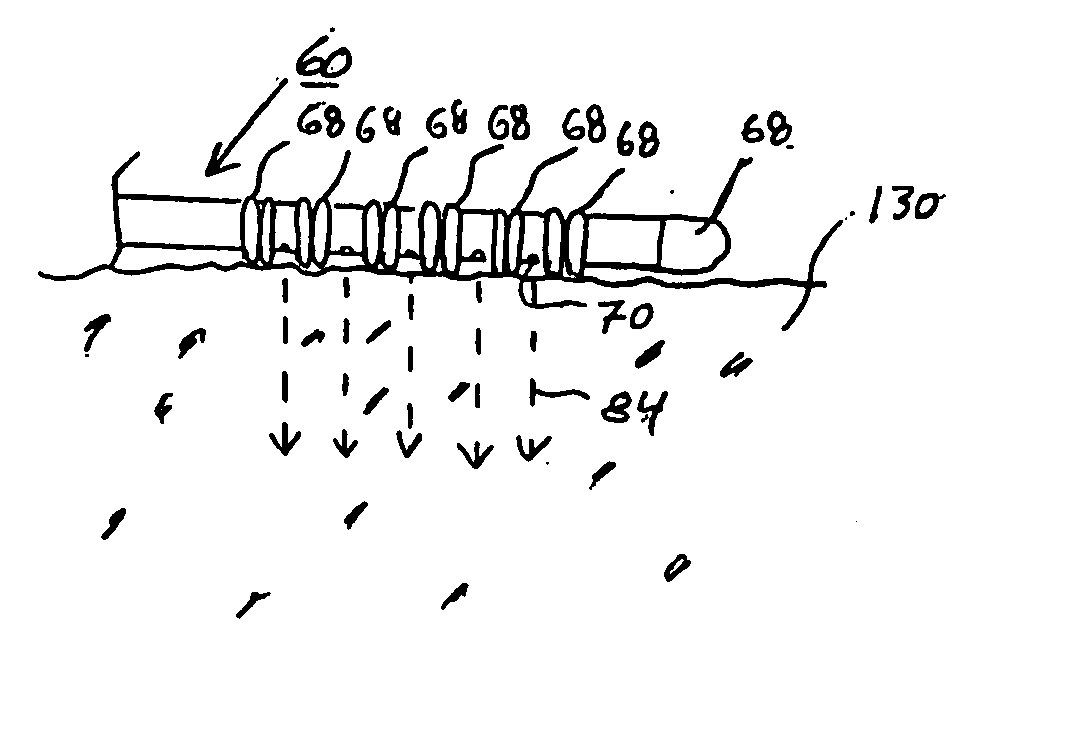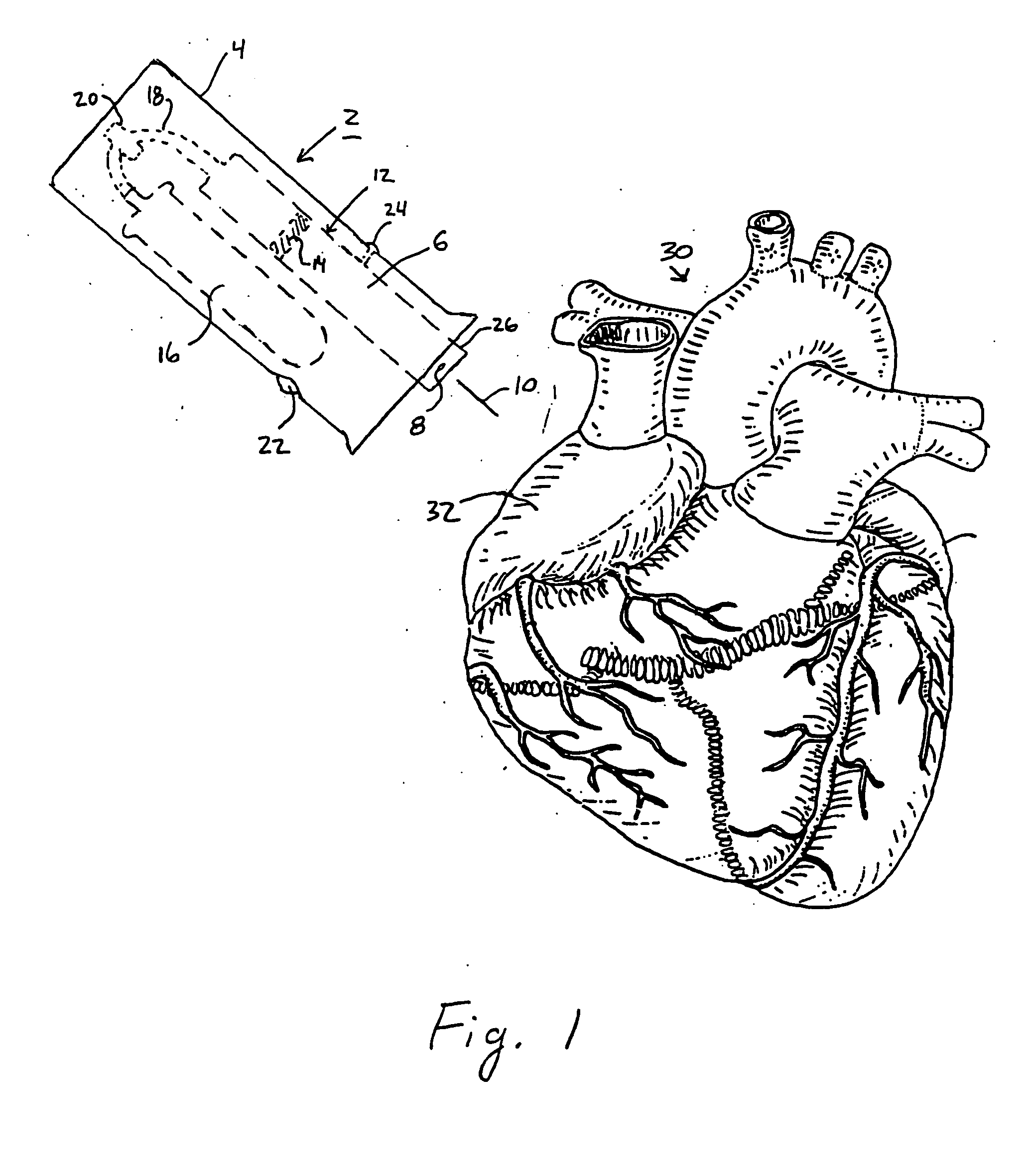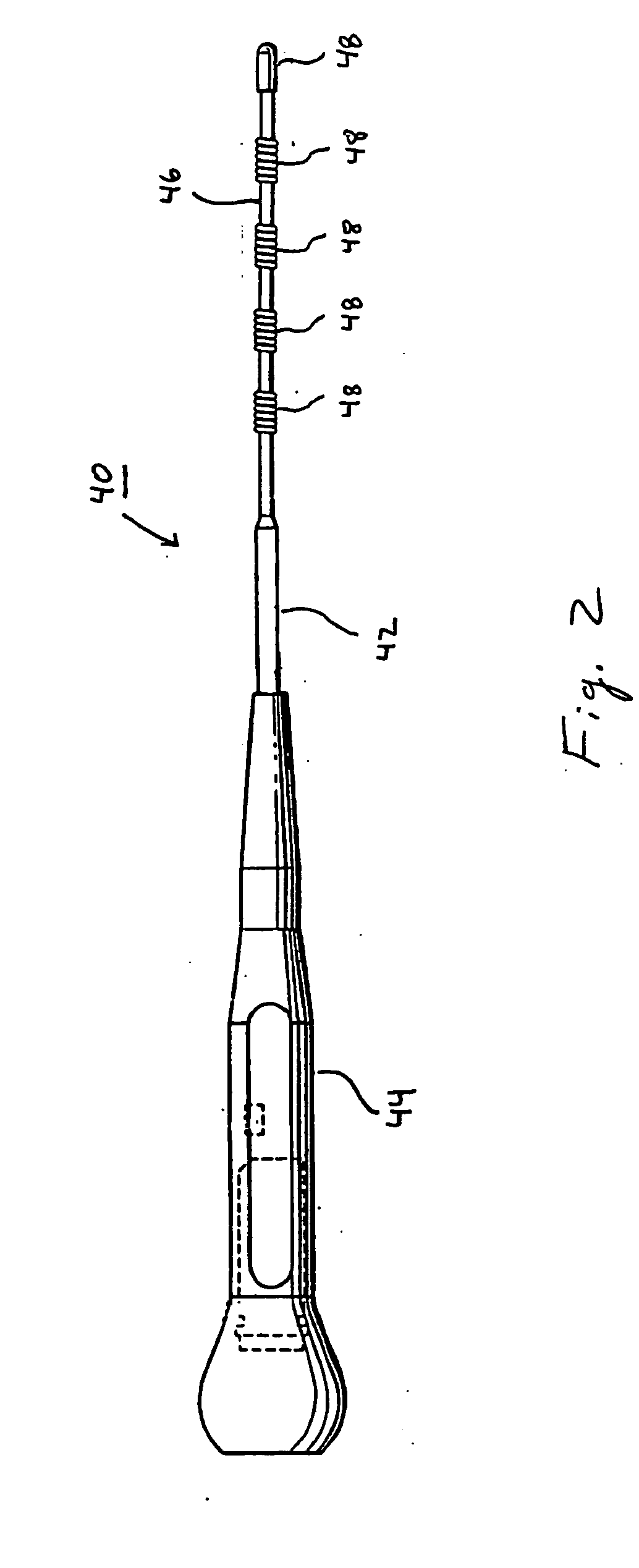Systems and methods for RF ablation using jet injection of a conductive fluid
a technology of conductive fluid and system, which is applied in the field of radio frequency ablation of tissue, can solve the problems of harmful and unwanted perforations in the tissue, limited power that can be delivered, and rapid heartbeat contraction, so as to reduce the effective resistivity of tissues, form accurate and deep lesions within the tissue, and reduce power dissipation
- Summary
- Abstract
- Description
- Claims
- Application Information
AI Technical Summary
Benefits of technology
Problems solved by technology
Method used
Image
Examples
Embodiment Construction
[0030] Referring to FIG. 1, a hand-held jet injector 2 is shown in accordance with one preferred embodiment of the present invention. The hand-held jet injector 2 is used to pre-treat tissue prior to the delivery of RF energy. The hand-held jet injector 2 includes a body portion 4 which is handled by an operator. The hand-held jet injector 2 contains a conductive fluid 6 therein that is ejected out one or more nozzles 8 to form a narrow jet 10 of conductive fluid 6 that is able to penetrate the tissue of a patient. Preferably, the tissue is heart tissue.
[0031] In one preferred aspect of the invention, the conductive fluid 6 is stored in a syringe-like structure 12 that includes a plunger 14 that is moved to eject the conductive fluid 6 (i.e., the injectate) outside the hand-held injector 2. In FIG. 1, the syringe-like structure 12 is preferably pneumatically connected to a source of pressurized gas 16 via a conduit 18. The pressurized gas 16 may include, for example, a pressurized ...
PUM
 Login to View More
Login to View More Abstract
Description
Claims
Application Information
 Login to View More
Login to View More - R&D
- Intellectual Property
- Life Sciences
- Materials
- Tech Scout
- Unparalleled Data Quality
- Higher Quality Content
- 60% Fewer Hallucinations
Browse by: Latest US Patents, China's latest patents, Technical Efficacy Thesaurus, Application Domain, Technology Topic, Popular Technical Reports.
© 2025 PatSnap. All rights reserved.Legal|Privacy policy|Modern Slavery Act Transparency Statement|Sitemap|About US| Contact US: help@patsnap.com



